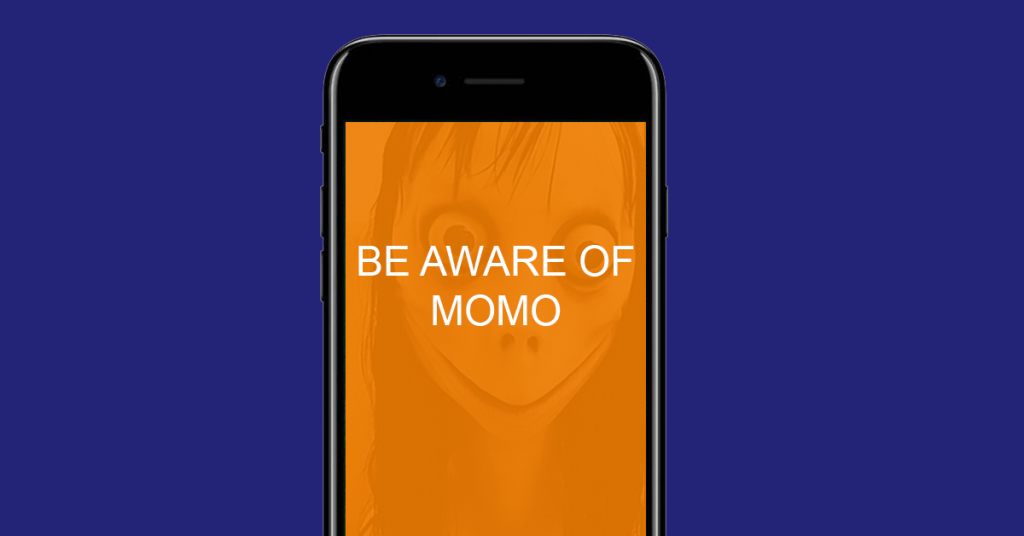Everything you need to know about “Momo Challenge”
If you haven’t heard about this yet. Take a seat and make sure you read this.
Apparently, the Momo challenge encourages youngsters to take part in some dark challenges and if they don’t, are threatened to be killed or put their family at harm.
Recent reports from charities have highlighted it is a hoax, however it is always important to side with caution.
Here, we give the latest information, so you’re well equipped to protect the younger vulnerable generation from this sick “game”.
If you have children, are a grandparent or relative to someone with children, please make sure you make them aware of Momo but more so, how to stay safe online.
What is the Momo challenge?
It supposedly starts with a creepy controller sending over violent images to children through WhatsApp and online games.
This then leads into a series of challenges where they ask youngsters to follow orders – these include how to self-harm or even kill themselves.
And if they don’t follow instructions, there’s threats they will be “killed in their sleep” or their family will come to harm.
Because the scary looking figure isn’t enough to give children nightmares, the challenge is leaving many children unable to sleep at night and understandably worried, not to mention those that choose to follow the instructions.
How to spot the “challenge”.
The Momo character has been symbolized by a distinctive character that is actually the artwork of a Japanese artist – Midori Hayashi – but they are in no way associated with the game.
This doll appears in YouTube videos and the Fortnite game – but given it is online, it’s worth also being aware that it could spread very quickly to other channels.
The doll will be enticing youngsters to contact on social media – that is then where the graphic images and instructions start.
Is the game really that dangerous?
Yes! It leaves youngsters scared but can target those more vulnerable who will engage with the distressing content.
It may start off quite light-hearted but it drags these youngsters into a much darker realm. The challenges encourage self-harm that progress, almost like levels in a game.
It’s a threat in terms of safety, welfare and well-being of those that become entangled in the game and we don’t know what harm it may encourage to even those that aren’t involved.
And then when they don’t want to carry on, they’re threatened.
Underlying this is the issue about data. It could well be being used as a way to harvest data from the youngsters it targets.
What can parents do?
Whether or not this is a hoax, the wider issue is, are parents aware of what their children are doing online across different devices?
National Online Safety (NOS) have issued a number of tips for parents to follow, these apply in general, not just with the Momo challenge.
1. It’s not real
The concept can be distressing, but let them know Momo is not a real person and can’t harm them. Encouraging them to stay away from searching for this type of content can only add to the distress, so advise them to steer clear on that too.
Reminding them that not everything they see on the internet is real – is really worthwhile.
2. Be there
Do you know what your children are doing online? You need to encourage a relationship that shares what they’re doing online. This is built around trust and allows you to intervene in things that could escalate.
It also means you’ll be more aware of changes in your children’s behavior.
3. Communicate
Discuss their online activity, regularly.
You get to understand why they do certain things online and gives them the confidence to talk to you about any issues or concerns they have.
4. Settings and controls
Many of the devices in your home will have parental controls – get your children involved in setting these so they are aware of what is acceptable and what isn’t.
You do have the last say but involving them is always beneficial – it communicates some of those barriers to what is right and wrong.
5. Following the crowd
Peer pressure is hard for parents to deal with – we know, we are parents too.
Trends and challenges can be tempting for us to take part, no matter what the implications may be.
Explain to your children they don’t have to do what others ask them to online or offline – they have a choice and should be comfortable with what they’re doing.
If ever they’re unsure, encourage them to talk to you or an adult they trust.
6. Fake news
Not all we see is true. Because things can go online so quick, it only has to be online for moments to have an impact.
Check the source and think about what you share as it amplifies that content very quickly – this can cause more worry.
7. Report it
Parental controls are great, however technology evolves quickly so some distressing or harmful content won’t get monitored.
If you see something you find inappropriate, offensive or harmful, most platforms give access to report it.
To avoid making things worse, block the account it came from so you can protect your children from it.
Teach your children how to screenshot content they feel could be malicious – it helps provide evidence that can help tackle issues quicker.
If you’re still not sure, there’s plenty of guidance for online safety regularly maintained at www.getsaferonline.org
Or give us a call on 01482 974444 to hear about the next cyber safe session we are running







